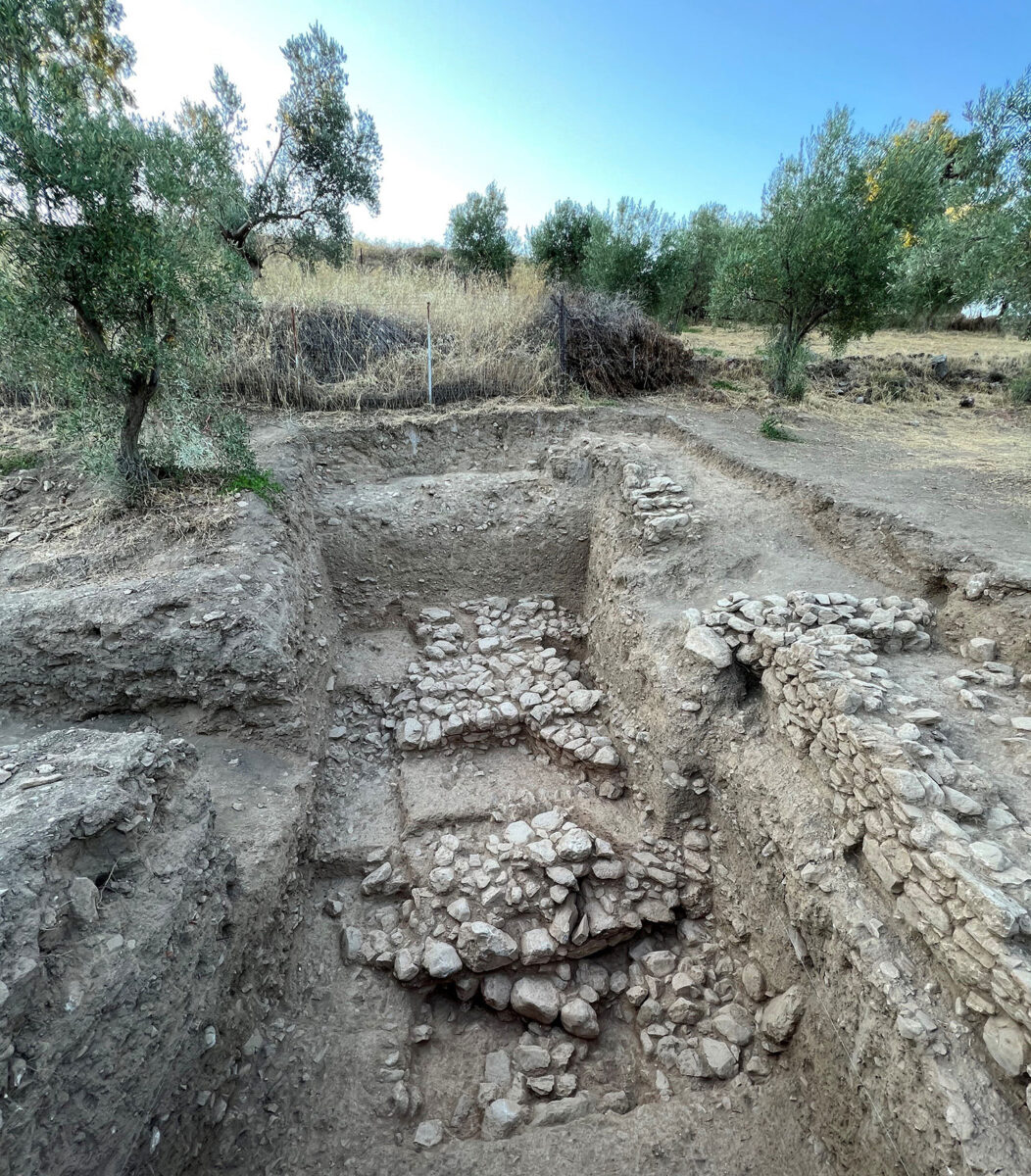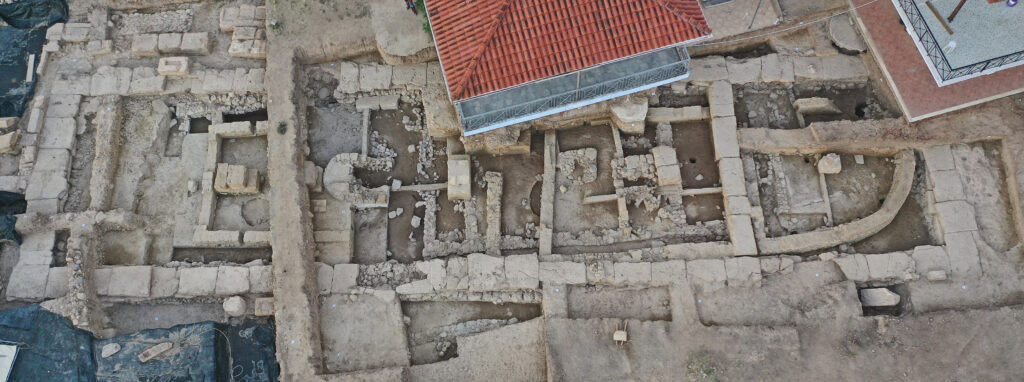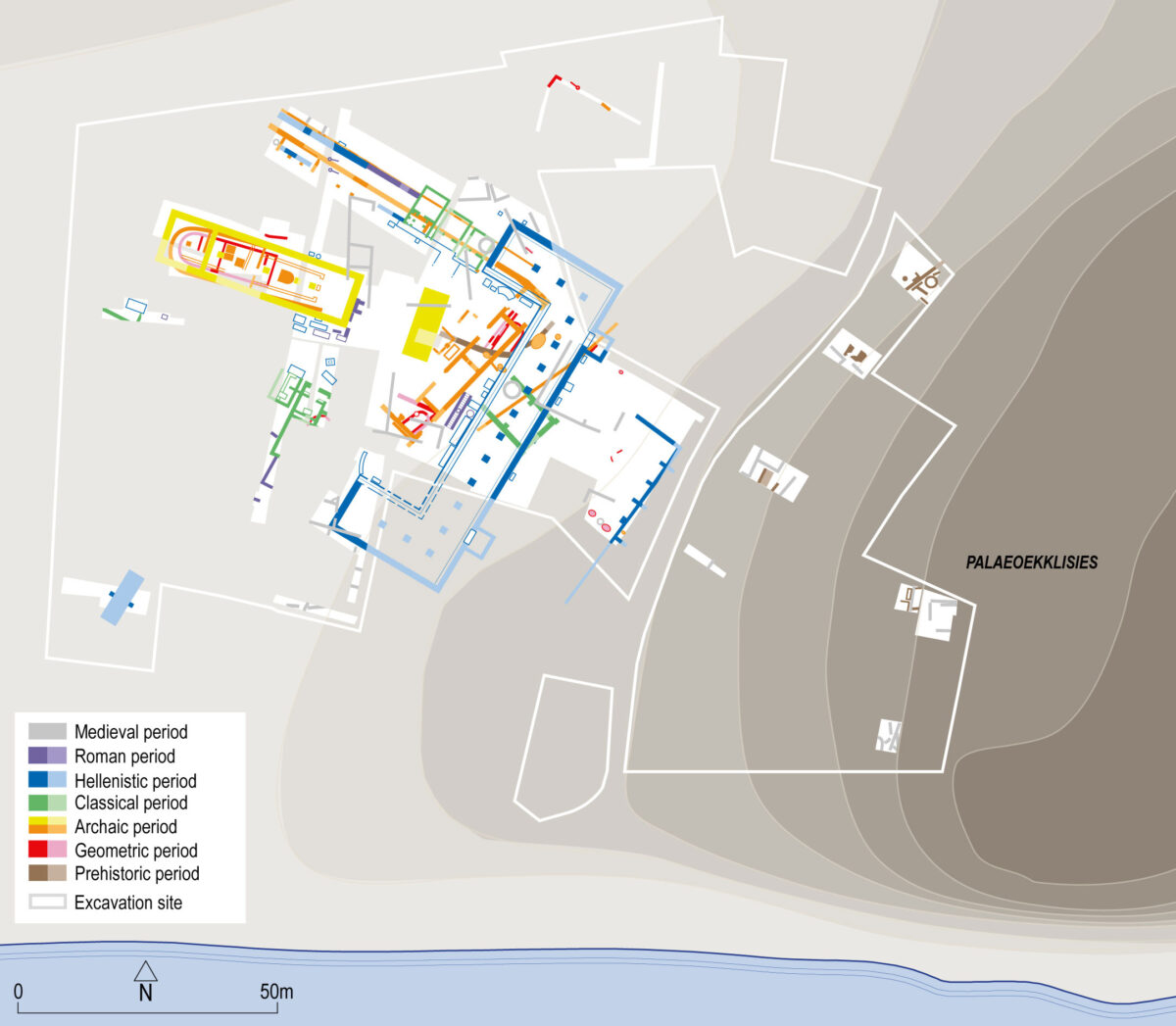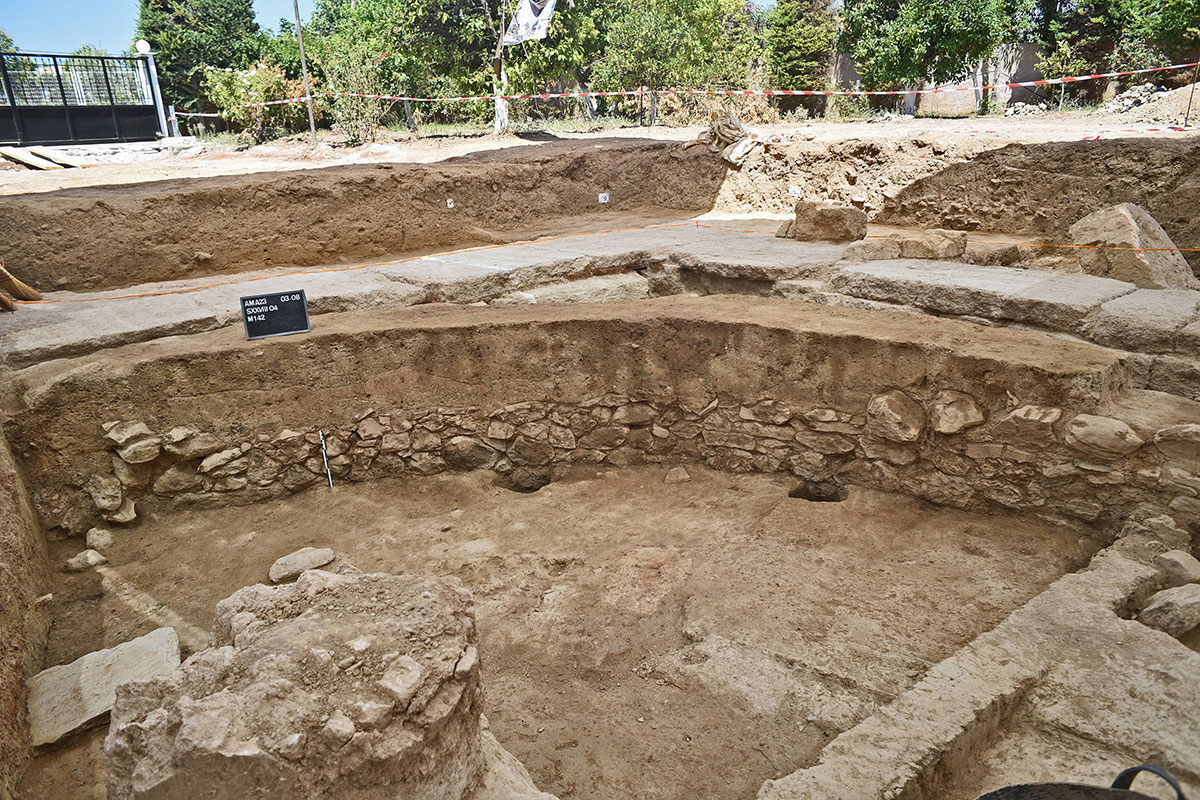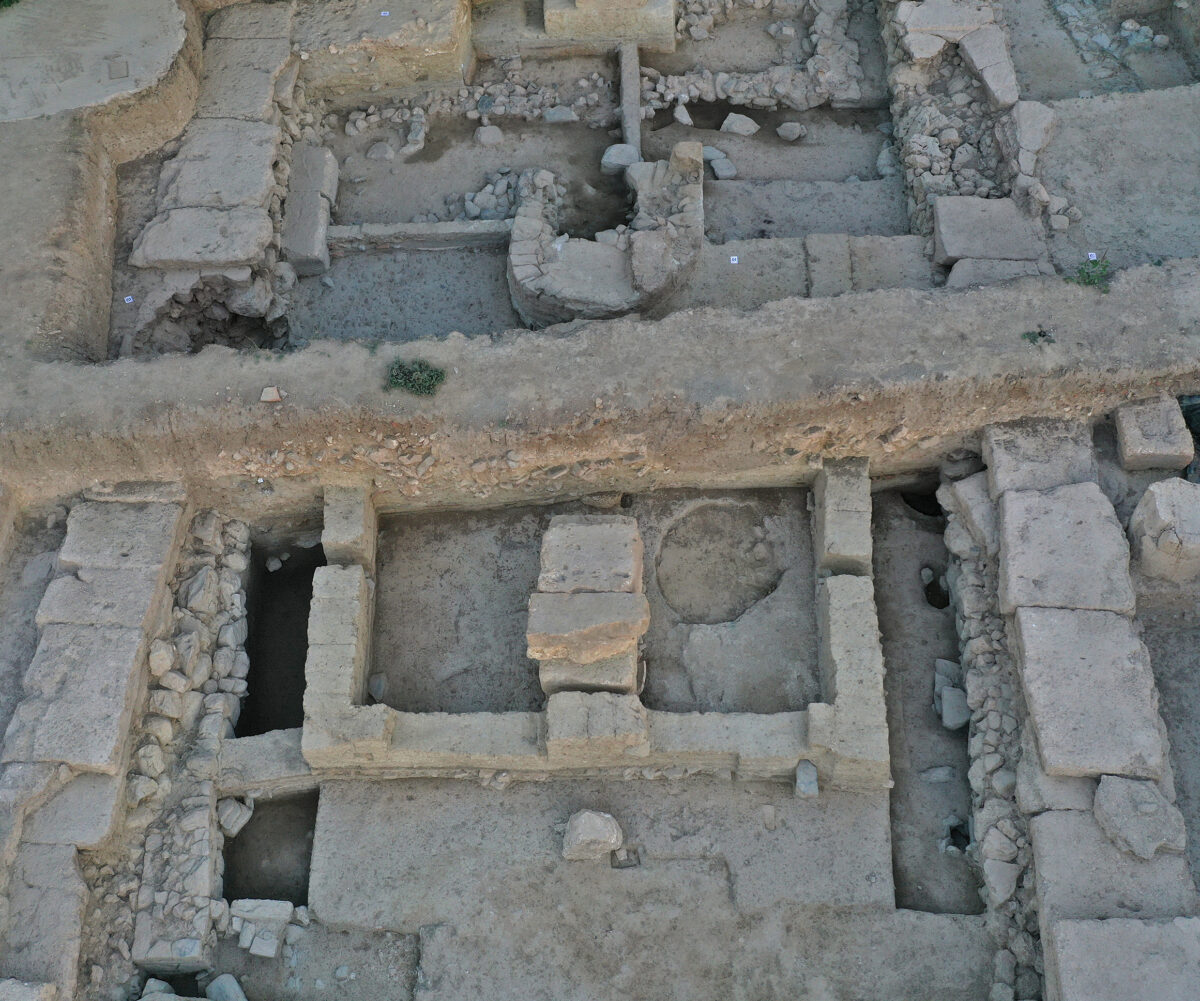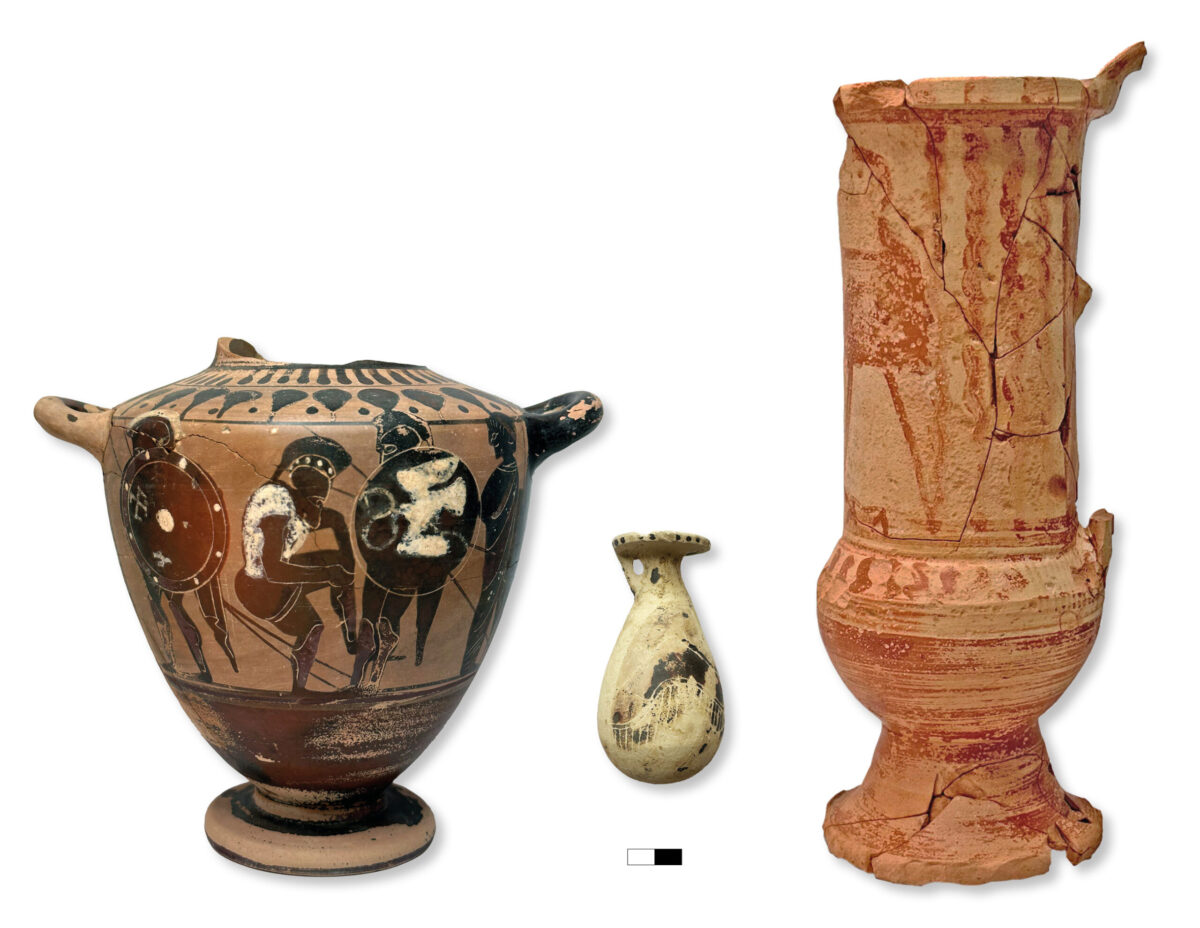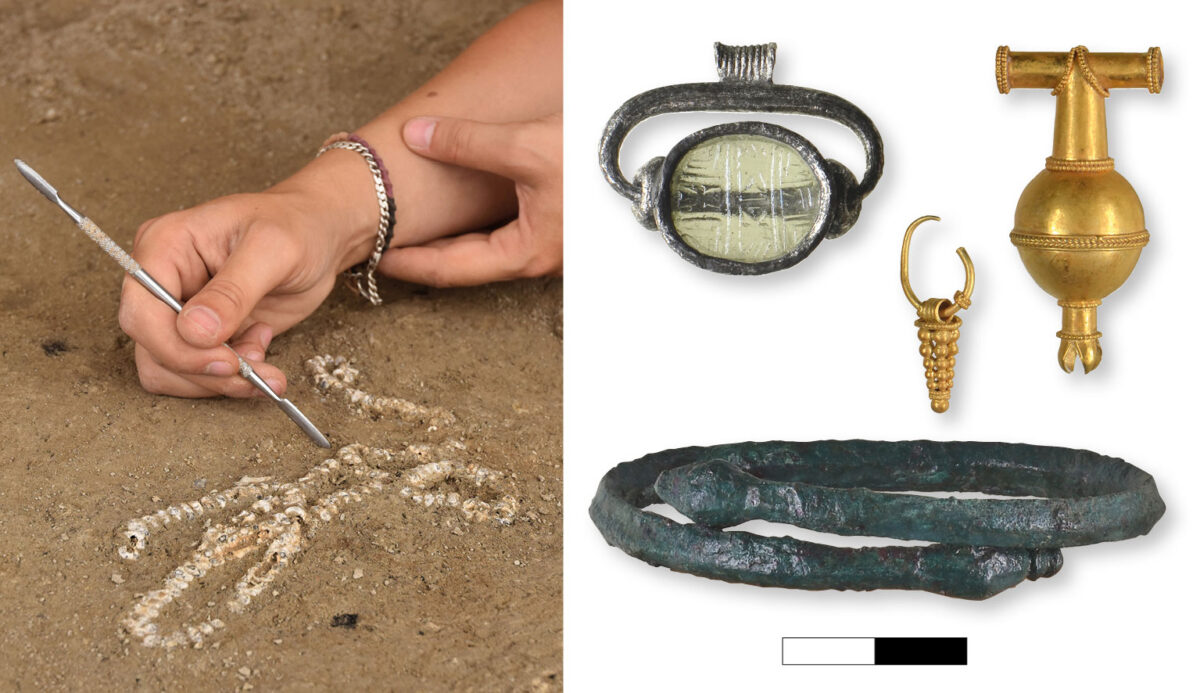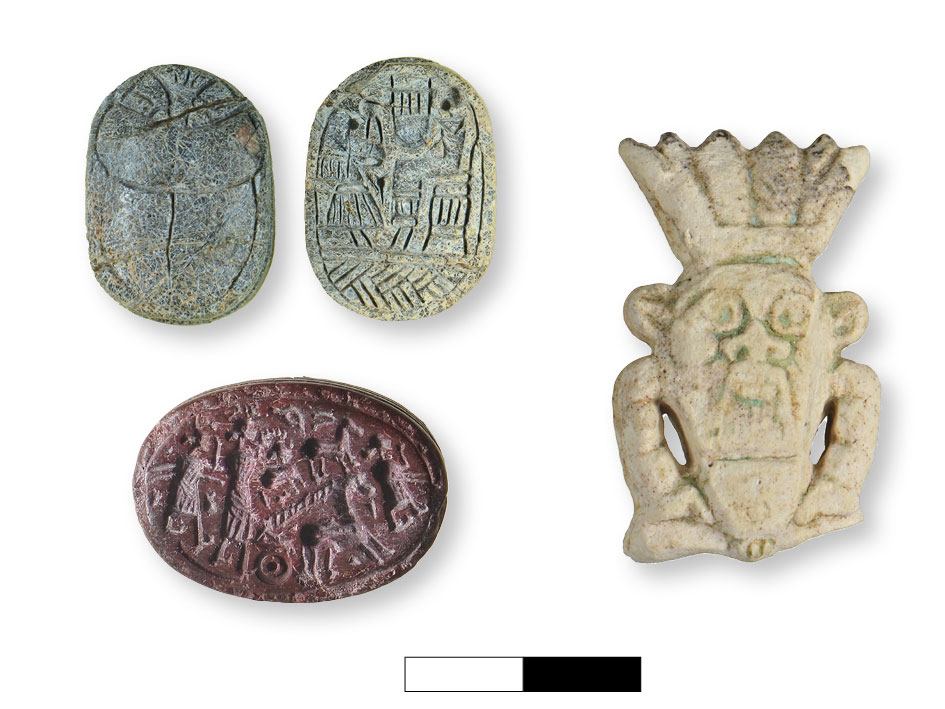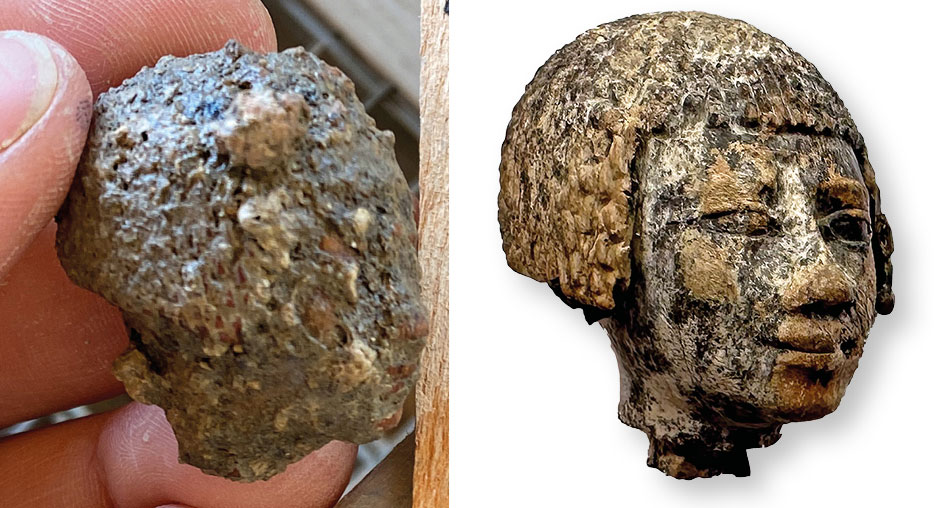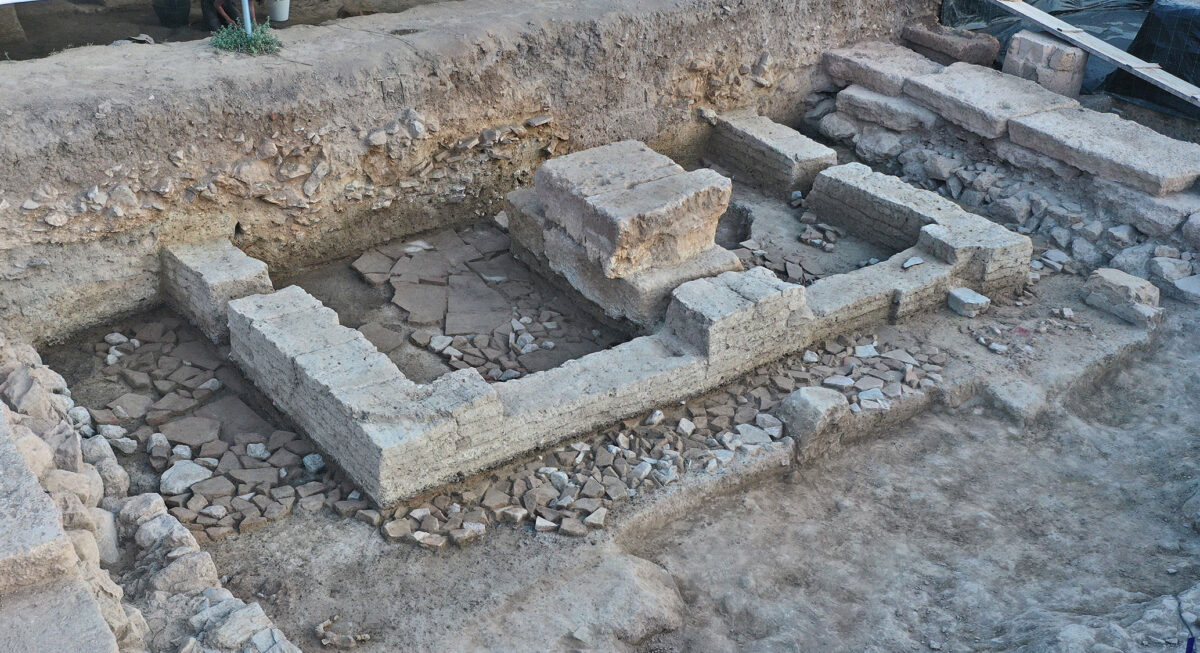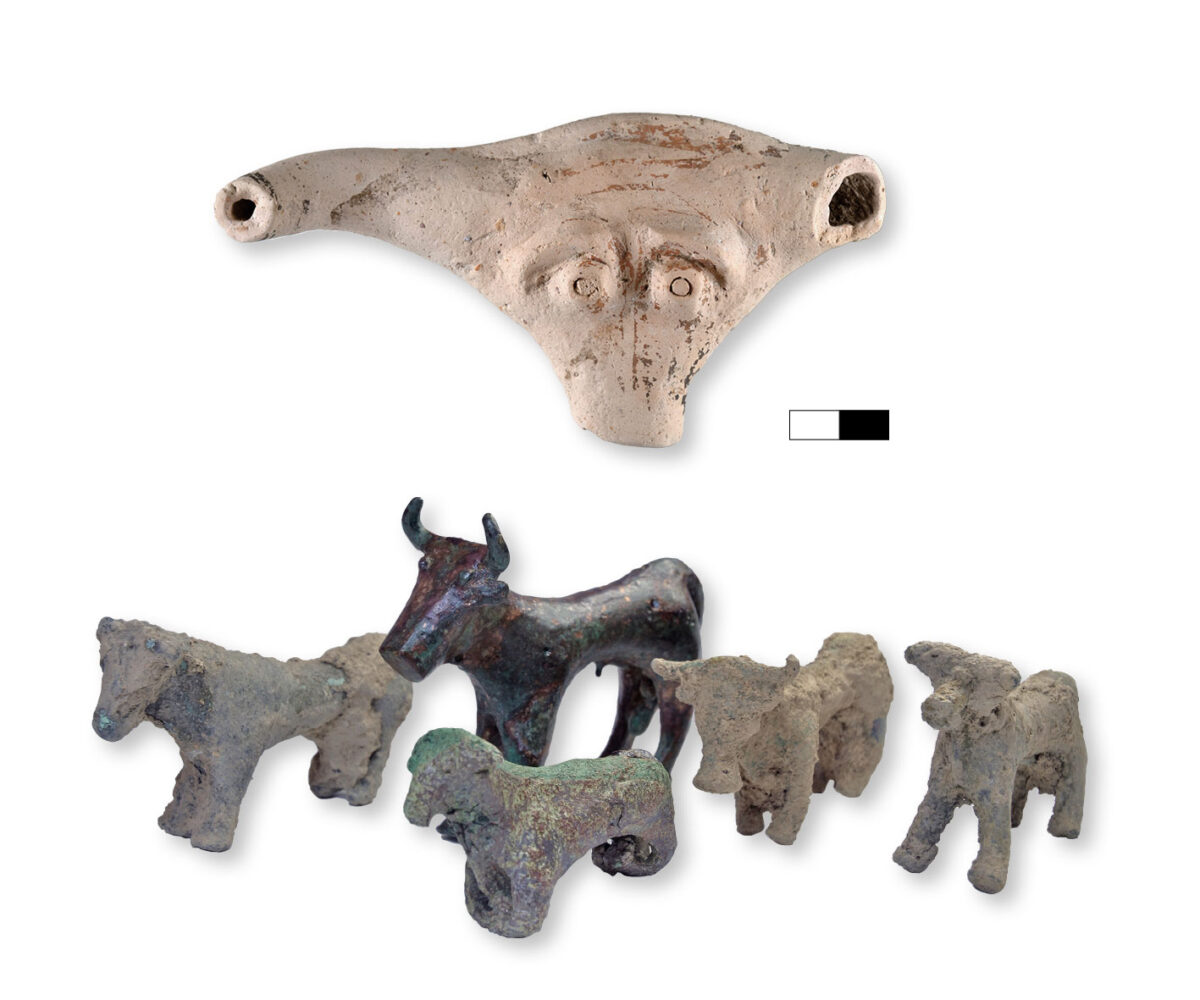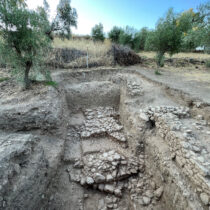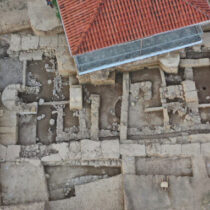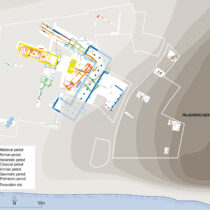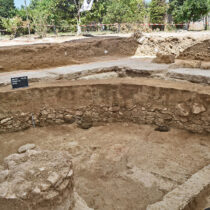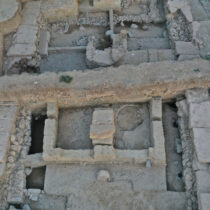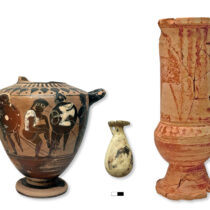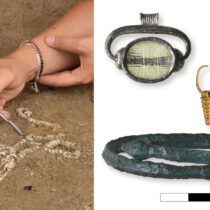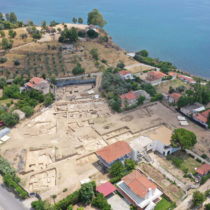For the fourth consecutive year, a team of Swiss and Greek archaeologists worked at the heart of the sanctuary of Artemis Amarysia (Greece), where a temple is steadily revealing its secrets. Architectural features, exotic objects and traces of the ancient origins of the cult are among last summer’s most striking discoveries.
An Archaic temple with symbolic dimensions
The 2023 campaign at the sanctuary of Artemis at Amarynthos (Euboea, Greece) allowed the complete excavation of the remains of a temple dating to the 7th c. BC. The building held a number of surprises for the archaeologists: its floor-plan was apsidal, which is quite unusual for this period, while its size was larger than originally anticipated. In fact, its length reached 34m, which corresponds to 100 feet in the Greek metric system: this “perfect” measurement is encountered on other monuments of the same period.
Sacrifices inside the temple?
Another surprising discovery were the hearths or altars found inside the temple rather than outside, as was often the case in Greek sanctuaries. On these stone platforms, the sacrificial fire consumed the portions of the animal victims offered to the gods. Thick layers of ash, rich in calcined bones, bear witness to this. The smoke from the sacrifices probably escaped through openings in the building’s roof.
Exotic offerings
Much like the previous years, this summer’s excavations brought to light a large number of offerings: vases, weapons, jewelry, etc. Several exotic objects stood out, including a finely chiseled ivory head with Egyptian features. Unrecognizable when it was first unearthed, it has been meticulously restored to reveal the quality of its workmanship.
The long history of the sanctuary
As the excavations continue, the history of the sanctuary becomes clearer. Traces of fire suggest that the “100-foot” temple was partially destroyed by fire in the second half of the 6th c. BC; it was temporarily restored with mud-brick walls, before being entirely replaced by a new building at the end of the century.
Deep trial trenches also revealed remains from earlier periods: a building that could date to the 9th or 8th c. BC, several bronze animal figurines of the same period, as well as a terracotta bull’s head from the late Bronze Age. While the exploration of these ancient levels is still in its early stages, the discoveries made until now already seem to confirm that the cult of Artemis at Amarynthos finds its roots in the site’s prehistory.
Prehistoric Amarynthos
The sanctuary lies at the foot of a hill occupied already during the Bronze Age. Excavations on its slopes have revealed imposing walls, which were probably part of a fortification system built during the 3rd mill. BC. The existence of Amarynthos in the Mycenaean period (second half of the 2nd mill. BC) is also attested in the archives of the Mycenaean palace at Thebes, in neighbouring Boeotia. The remains of prehistoric Amarynthos, still visible when the sanctuary was developed, certainly contributed to the attractiveness of the site: there was enough here to fuel tales of a heroic past, such as those of Homer, to which the Greeks of the time aspired.
The sanctuary in the ancient landscape
In parallel with the excavations, an extensive survey is carried out in the region of Amarynthos. Archaeologists are seeking to understand how the sanctuary was integrated into the ancient landscape, through the study of the natural environment, the distribution of settlements, agricultural areas, cemeteries, quarries, as well as the communications network. The latter included a “Sacred Way” linking the sanctuary of Amarynthos to the ancient city of Eretria.
After the excavation
After several years of intense fieldwork and a series of spectacular discoveries, the time has come to make use of the data collected. An international team of specialists is contributing to this stage of the research. Archaeozoologists and archaeobotanists, identifying thousands of bone fragments and plant remains, experts analyzing the layers removed during the excavation under the microscope, pottery specialists, architects, etc.: the investigation of Artemis is now continuing in the laboratory.
